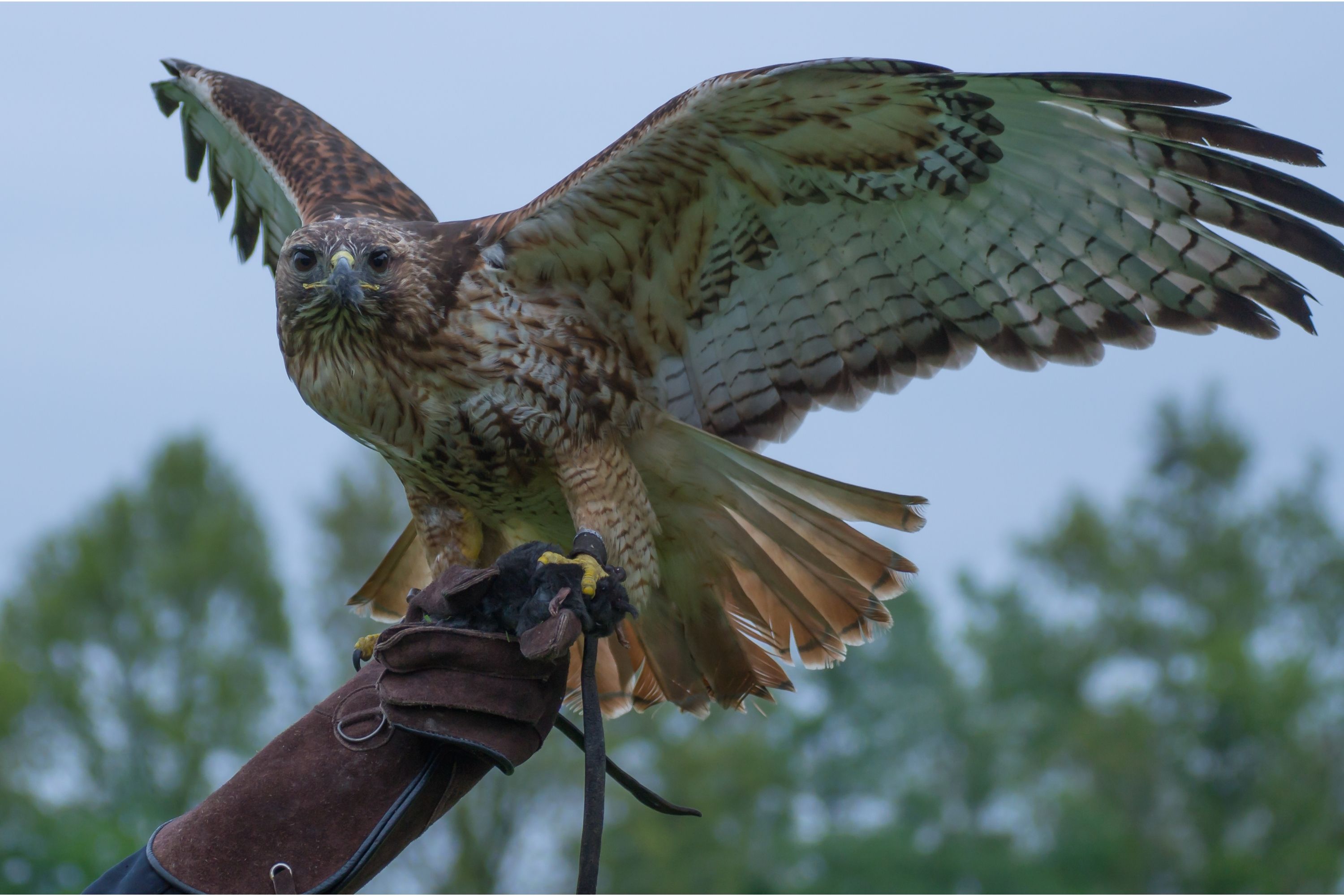Red-tailed hawk
(Buteo jamaicensis)

Description
Buteo jamaicensis, commonly known as the Red-tailed Hawk, is a bird of prey that belongs to the family Accipitridae. It is one of the most widespread and recognizable hawks in North America, known for its distinctive red tail feathers. This bird is a versatile predator that can adapt to various habitats and prey types, making it a successful and important member of its ecosystem. In this article, we will explore the physical characteristics, distribution, habitat, behavior, diet, and conservation status of the Red-tailed Hawk. Physical Characteristics: The Red-tailed Hawk is a medium-sized raptor with a wingspan ranging from 3 to 4 feet (91 to 122 cm) and a body length of about 18 to 25 inches (46 to 64 cm). It is sexually dimorphic, with females being larger than males. The weight of an adult Red-tailed Hawk ranges from 1 to 3 pounds (0.45 to 1.4 kg). The plumage of this hawk varies depending on age and geographic location, but all have a distinctive reddish-brown tail that gives the bird its name. Adult Red-tailed Hawks have a dark brown back and wings, a pale underbelly with dark streaks, and a reddish-brown chest. They have a white throat and a dark band across their belly. The eyes of an adult hawk are dark brown, and the beak is yellow with a black tip. Immature Red-tailed Hawks have a pale head, with a streaked underbelly and wings. Their tail is shorter and lighter in color than that of an adult hawk. Distribution and Habitat: The Red-tailed Hawk is found throughout North America, from Alaska and Canada to Panama. They are most abundant in open habitats such as grasslands, deserts, and forests. They are also found in suburban and urban areas, where they hunt in parks and along roadsides. Red-tailed Hawks are resident birds in much of their range, but some populations in northern regions migrate south during the winter. Behavior: Red-tailed Hawks are solitary birds, except during the breeding season when they form monogamous pairs. They are territorial and defend their breeding territory vigorously against intruders. They have a variety of calls, including a high-pitched scream that is often associated with their presence in movies and television shows. Red-tailed Hawks are skilled hunters and have a wide-ranging diet that includes small mammals such as rodents, rabbits, and squirrels, as well as birds, reptiles, and amphibians. They hunt by perching on a high vantage point, such as a tree or telephone pole, and watching for prey below. When they spot a potential meal, they swoop down and capture it with their sharp talons. Conservation Status: The Red-tailed Hawk is not considered endangered or threatened, and its population is stable. However, like many birds of prey, it was once heavily persecuted by humans due to its perceived threat to livestock. The use of pesticides such as DDT also had a negative impact on Red-tailed Hawk populations in the mid-twentieth century. Today, they are protected by law, and their populations have rebounded. Red-tailed Hawks are important members of their ecosystem, helping to control rodent populations and maintaining the balance of prey and predator species. Conclusion: Buteo jamaicensis, the Red-tailed Hawk, is a versatile and important predator that is found throughout North America. Its distinctive reddish-brown tail makes it easily recognizable, and its skill as a hunter and scavenger makes it a key member of its ecosystem. Although once persecuted by humans, the Red-tailed Hawk is now protected and its populations are stable.
Taxonomic tree:







